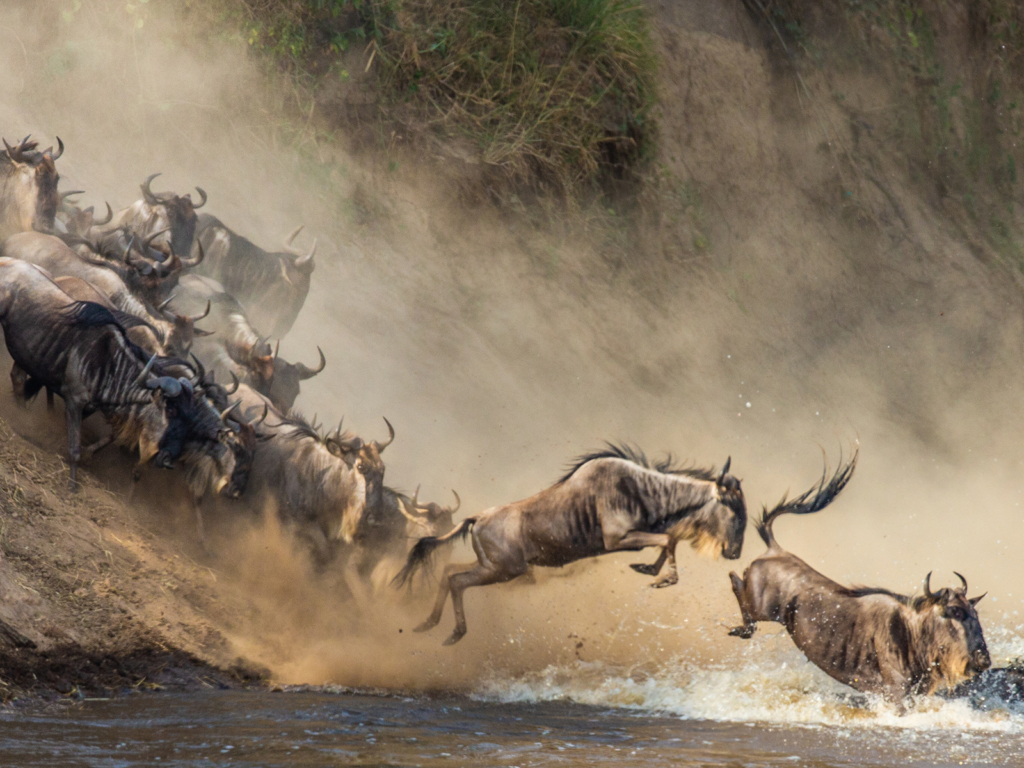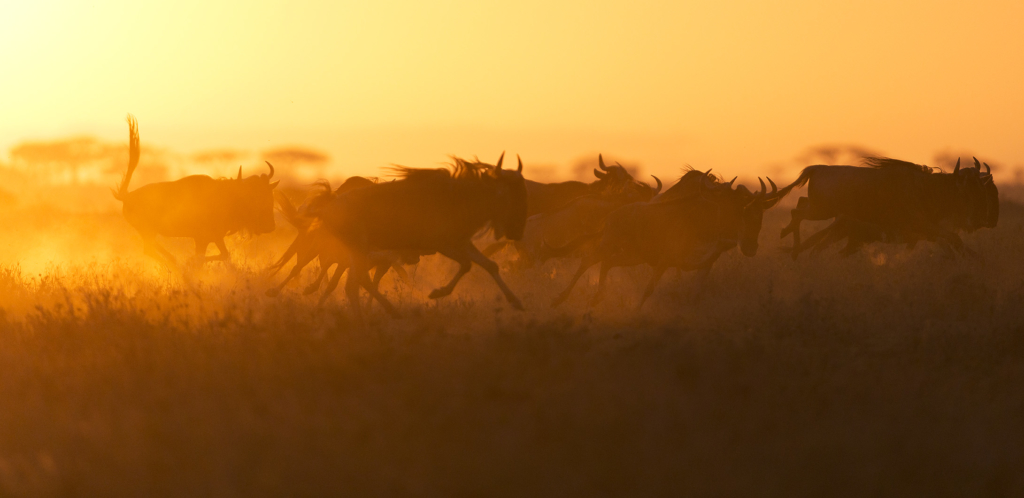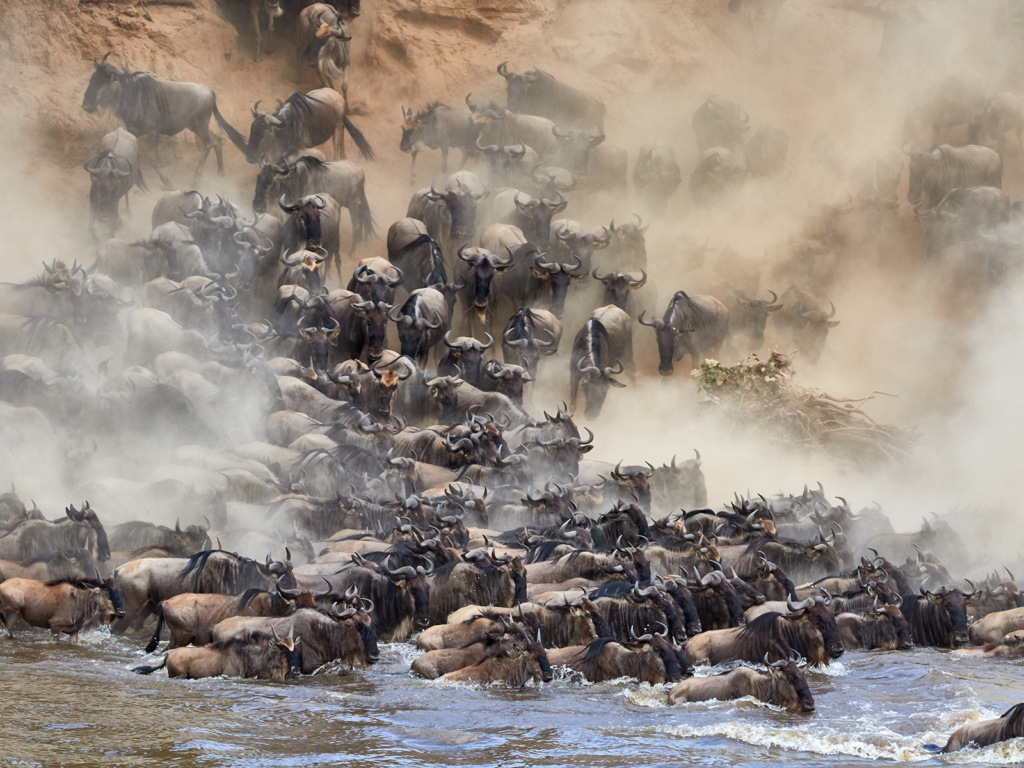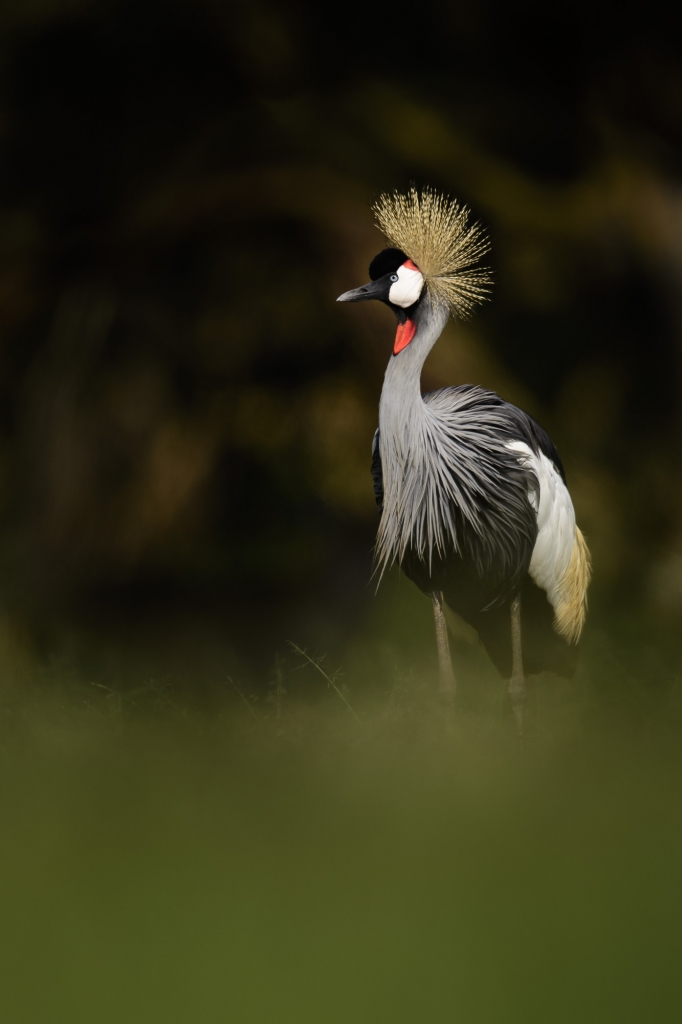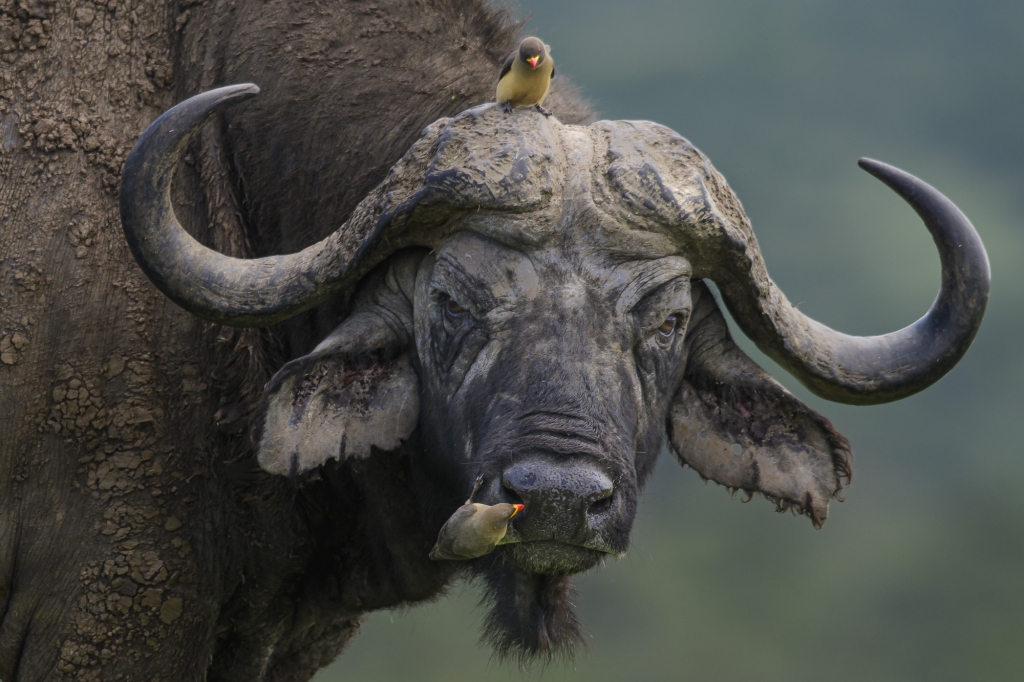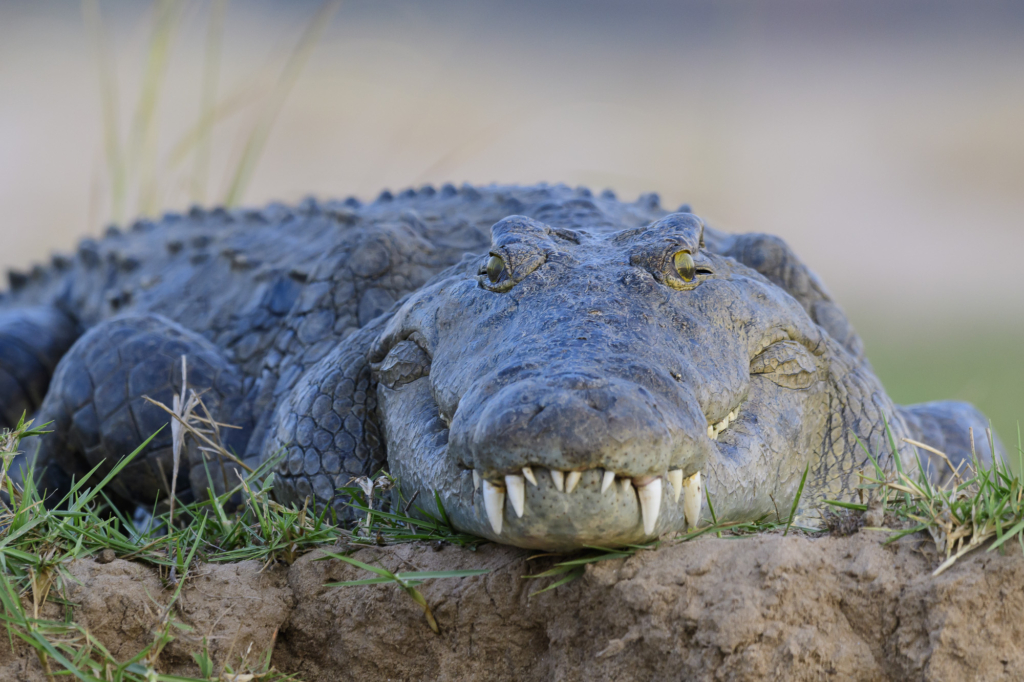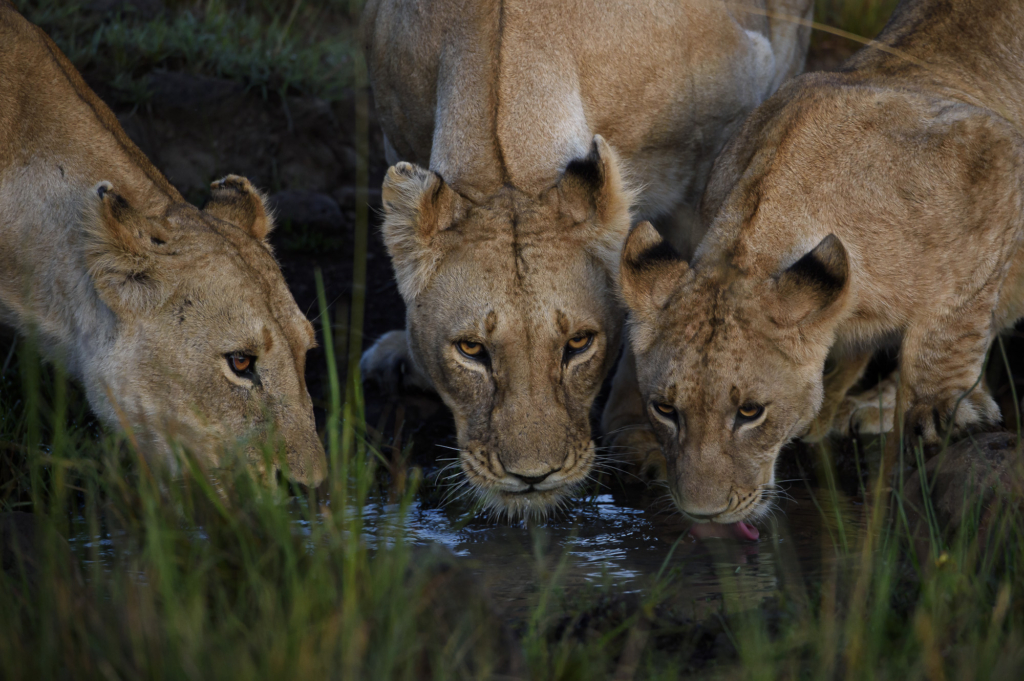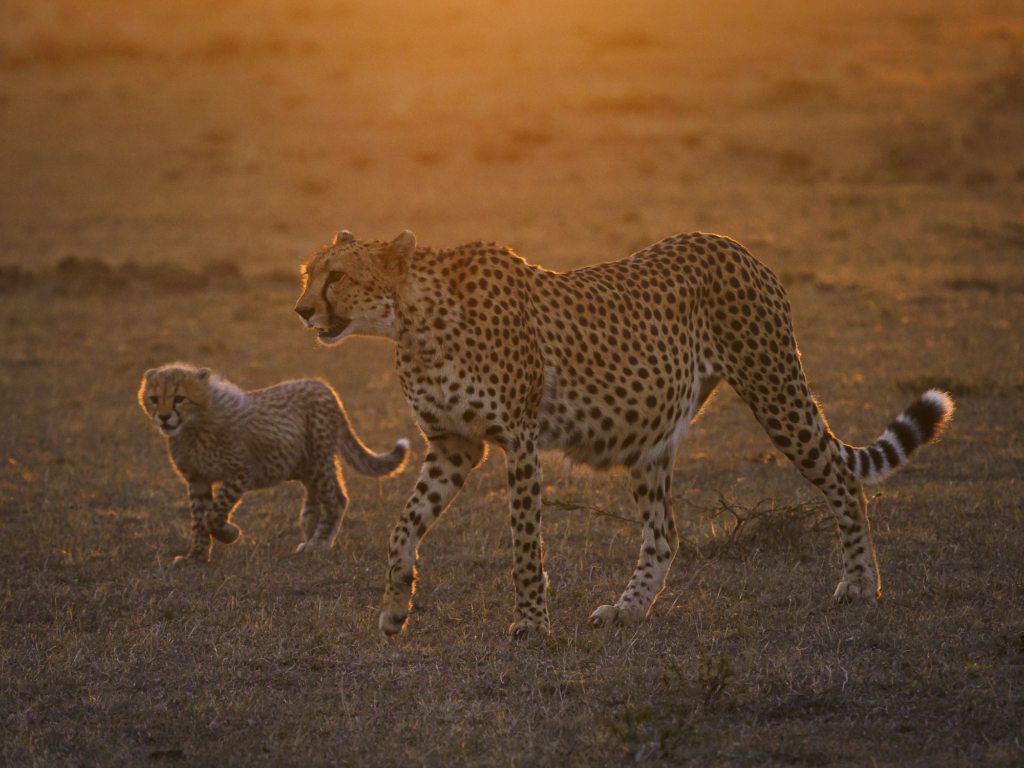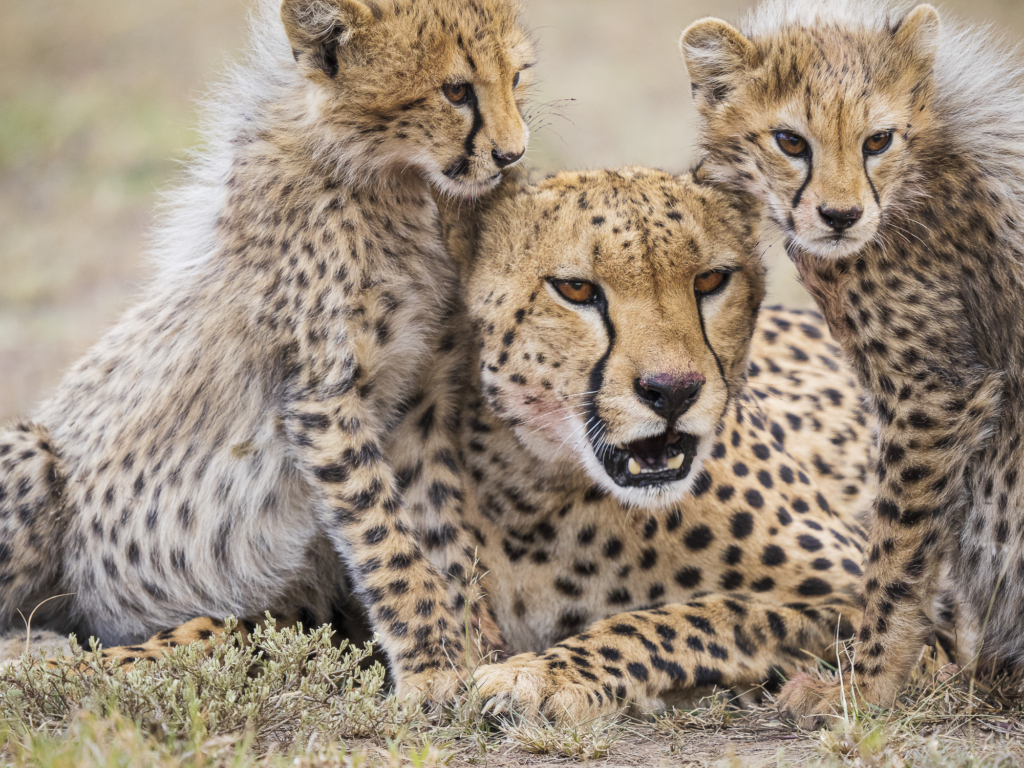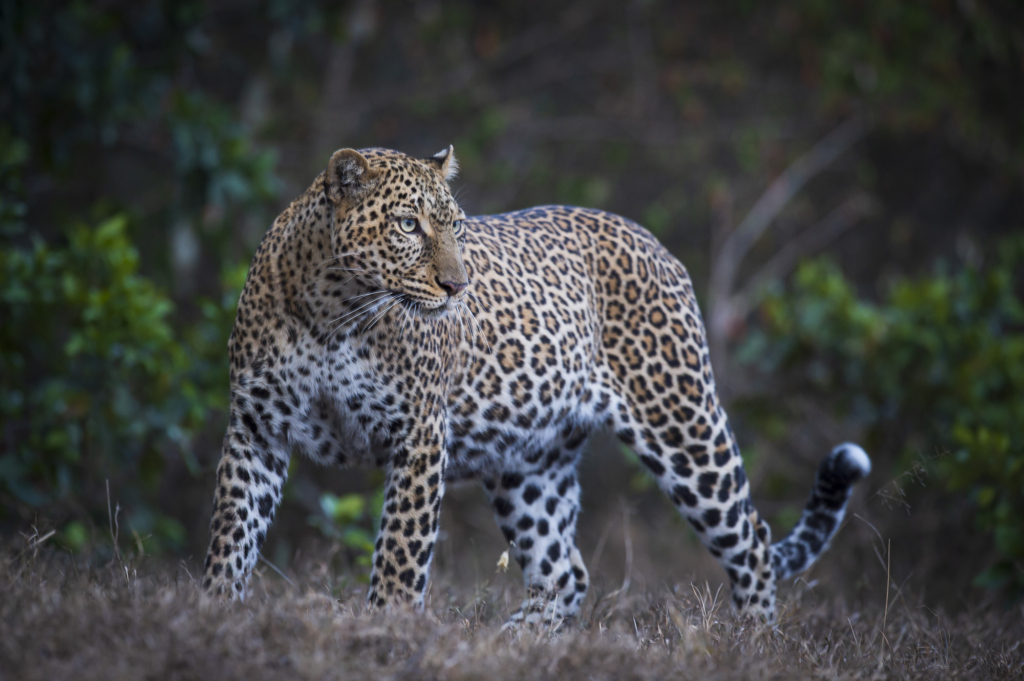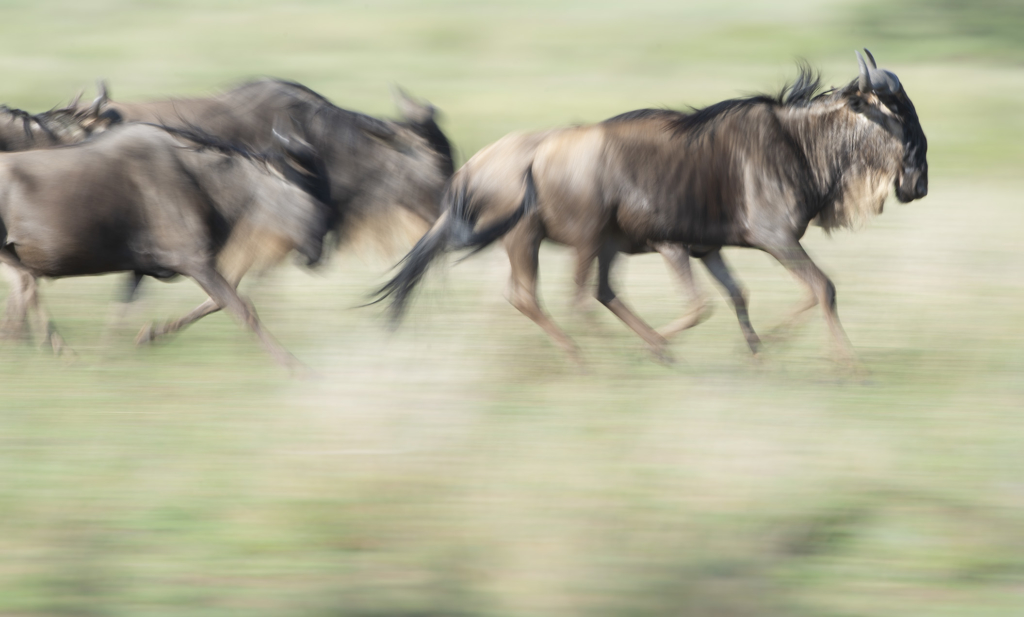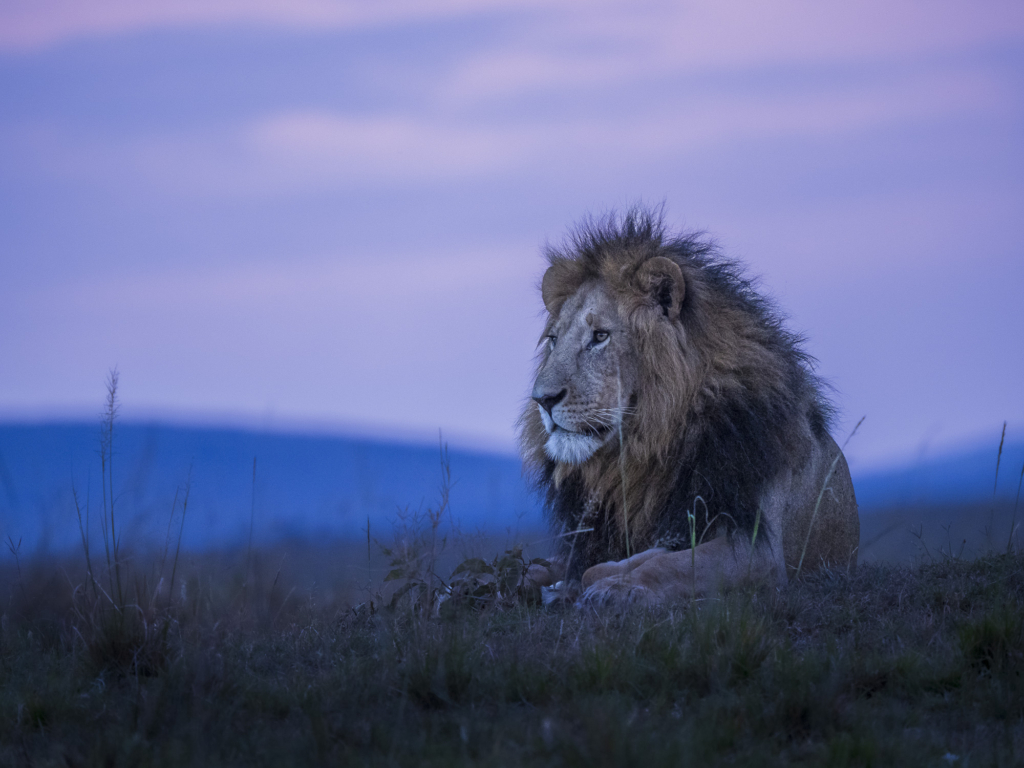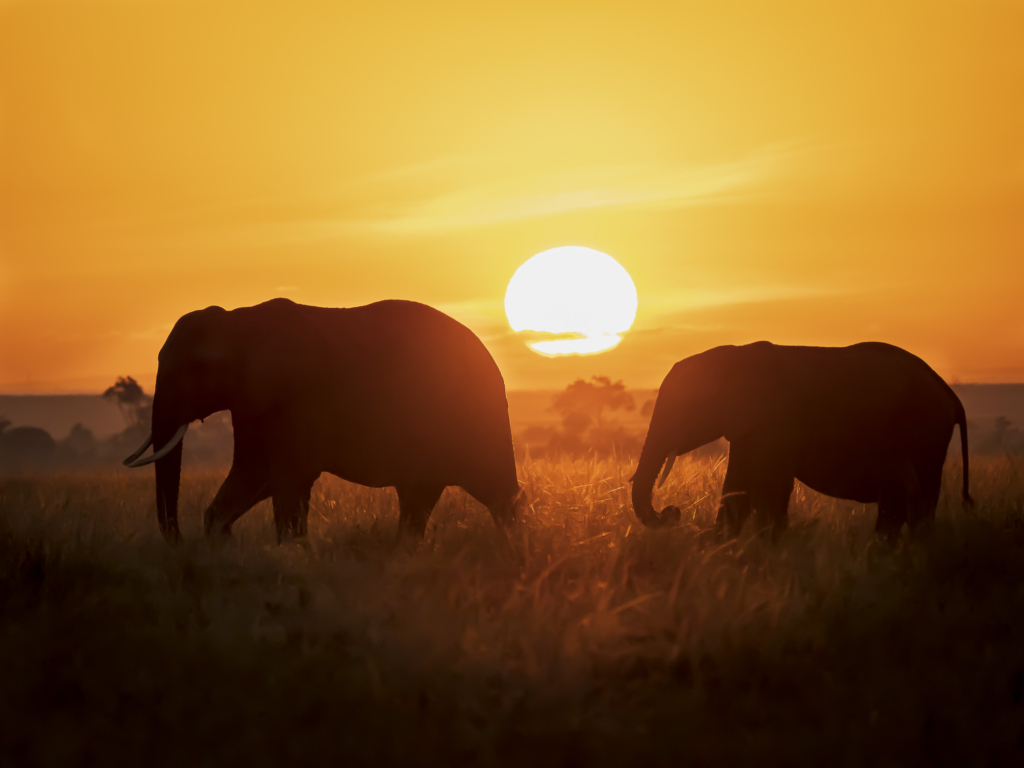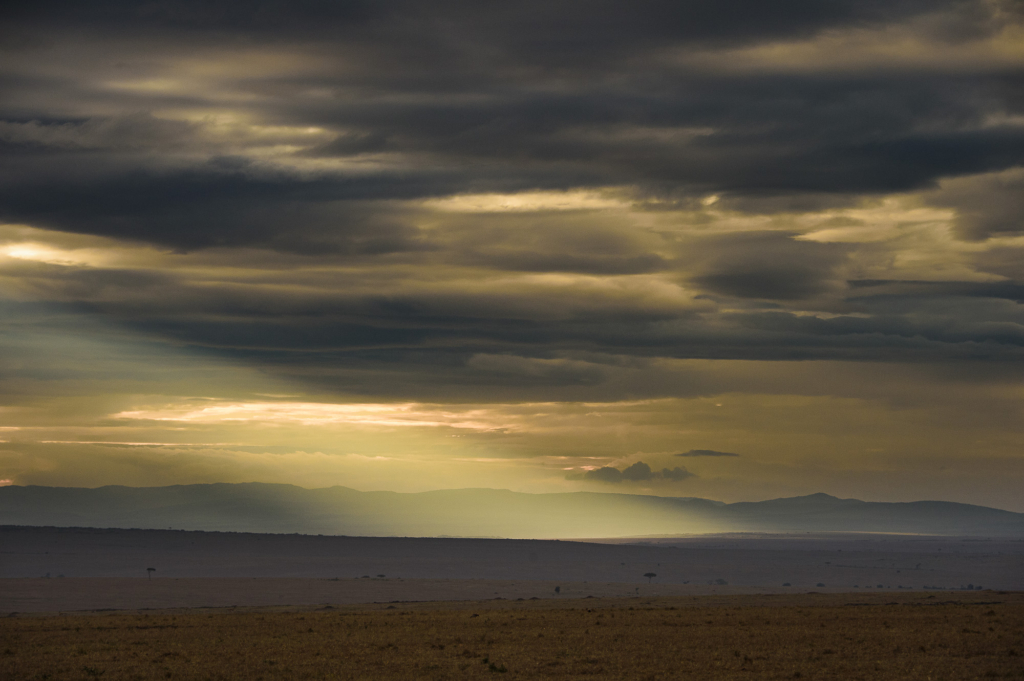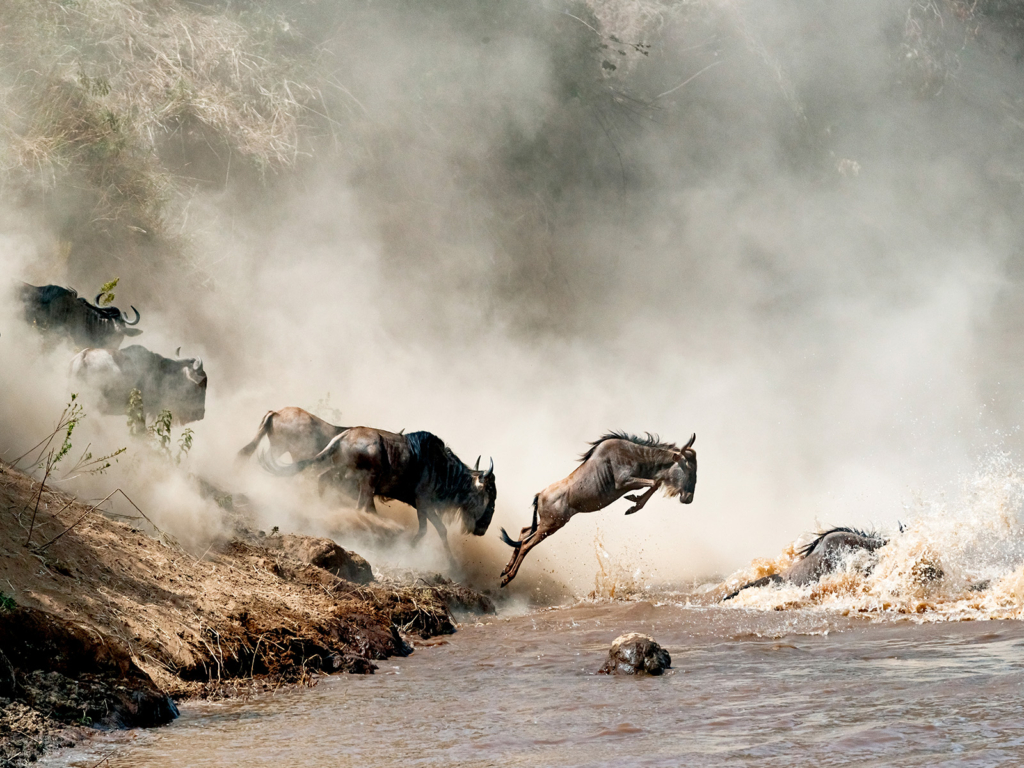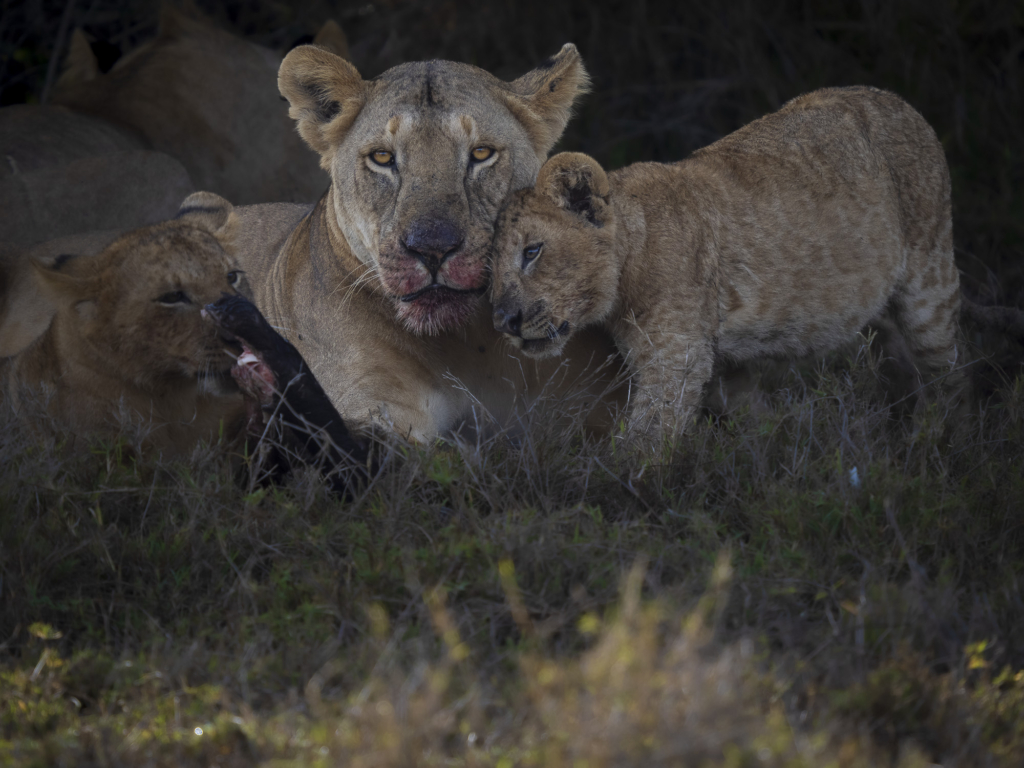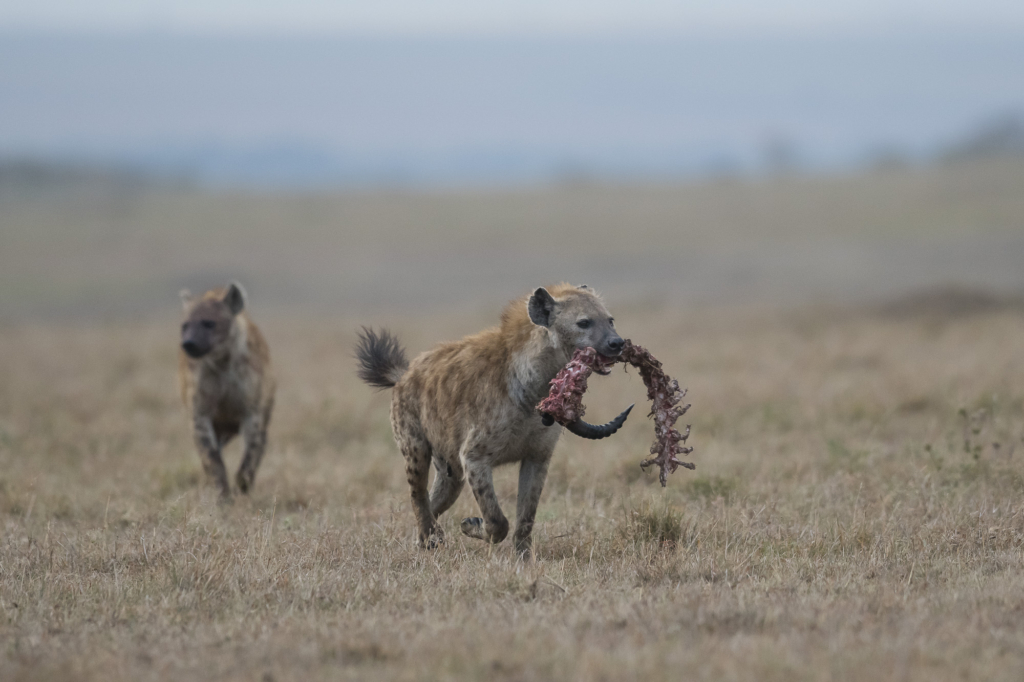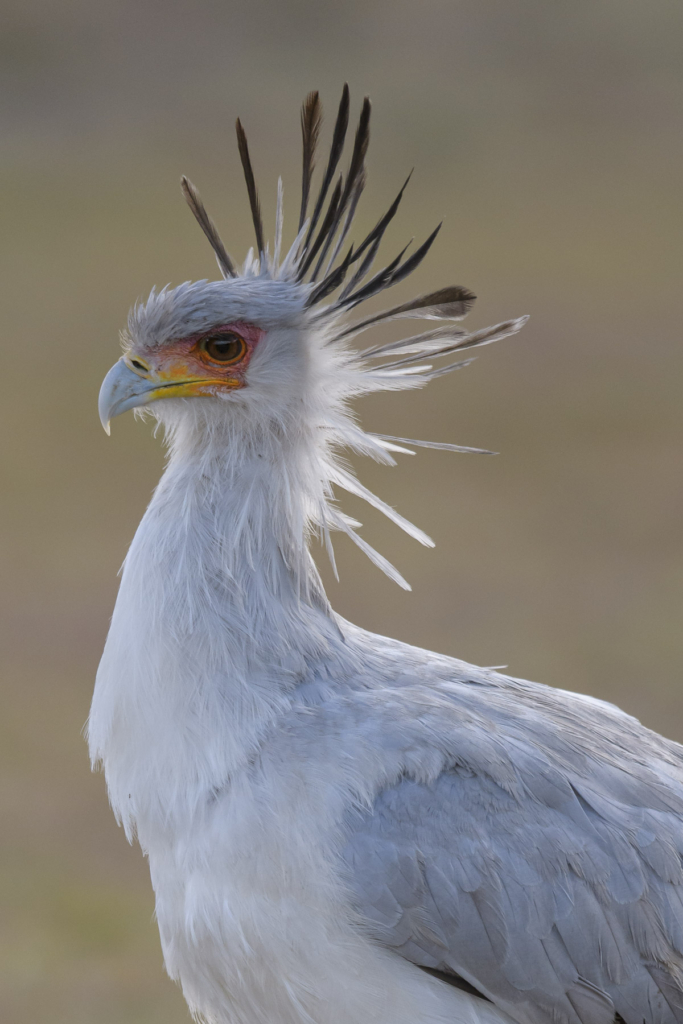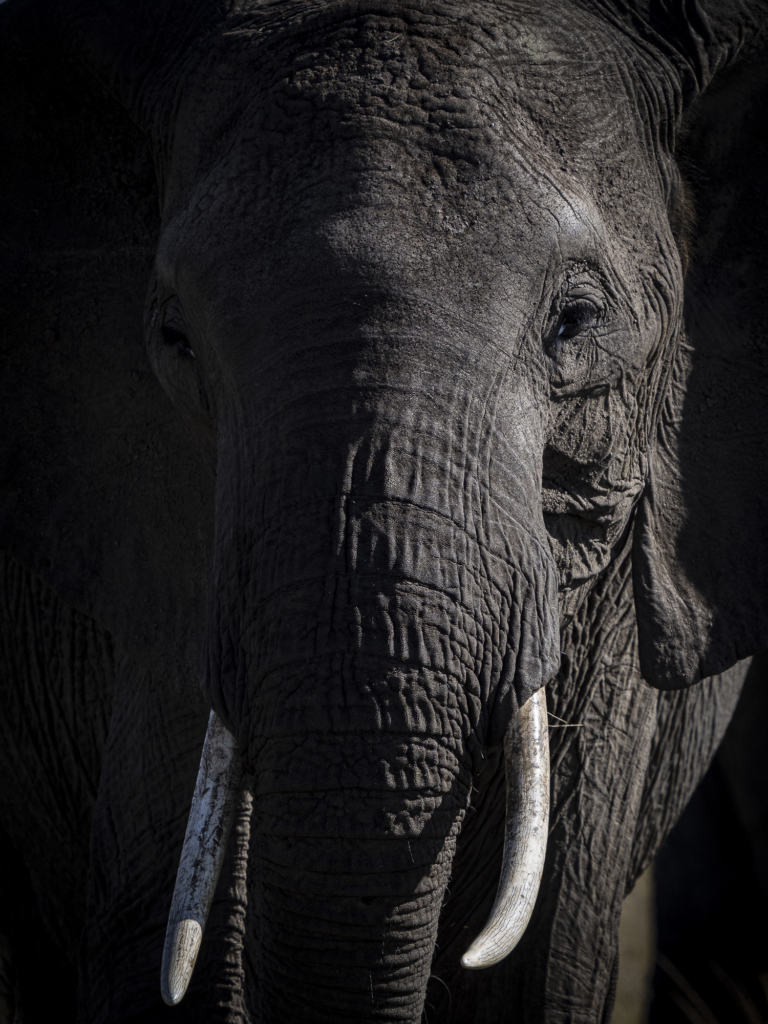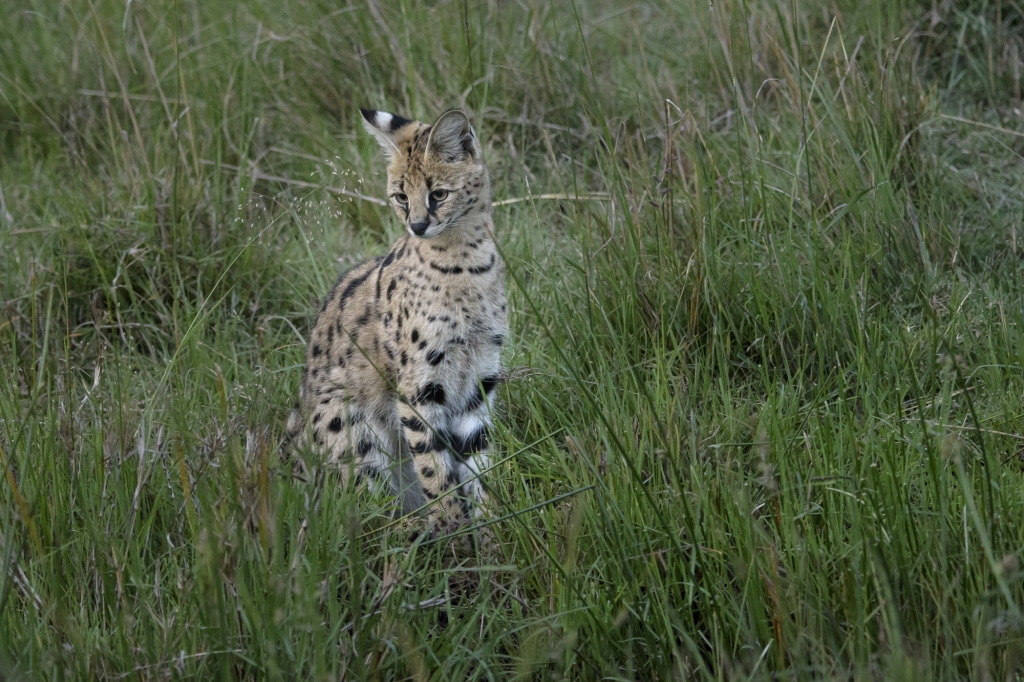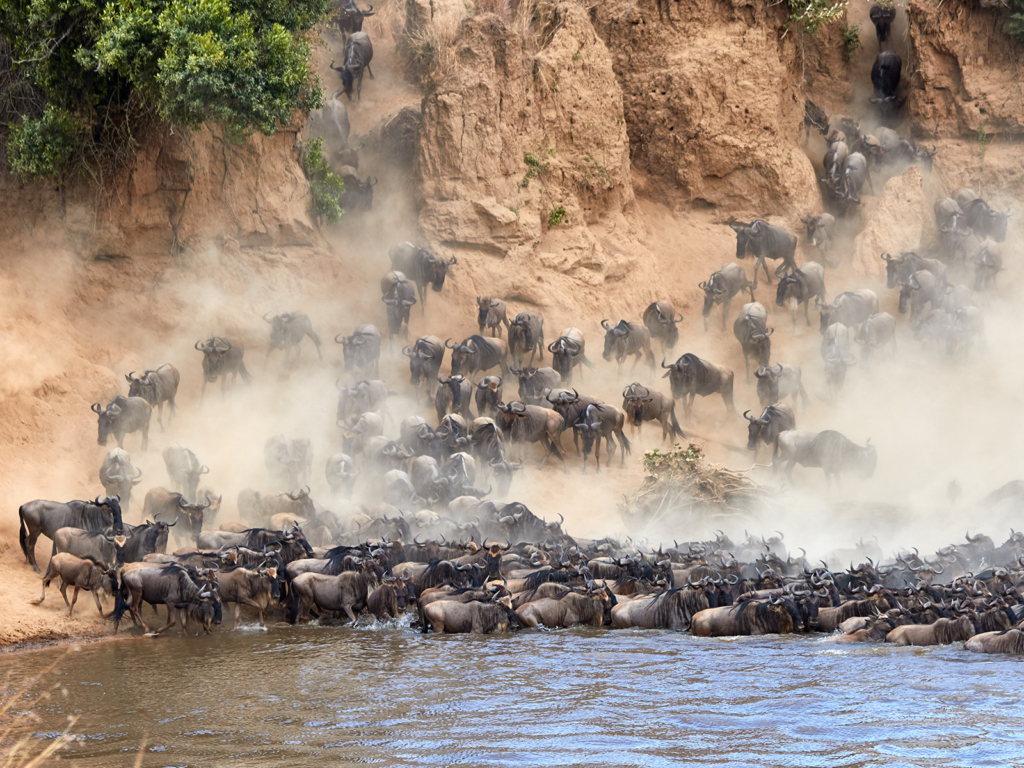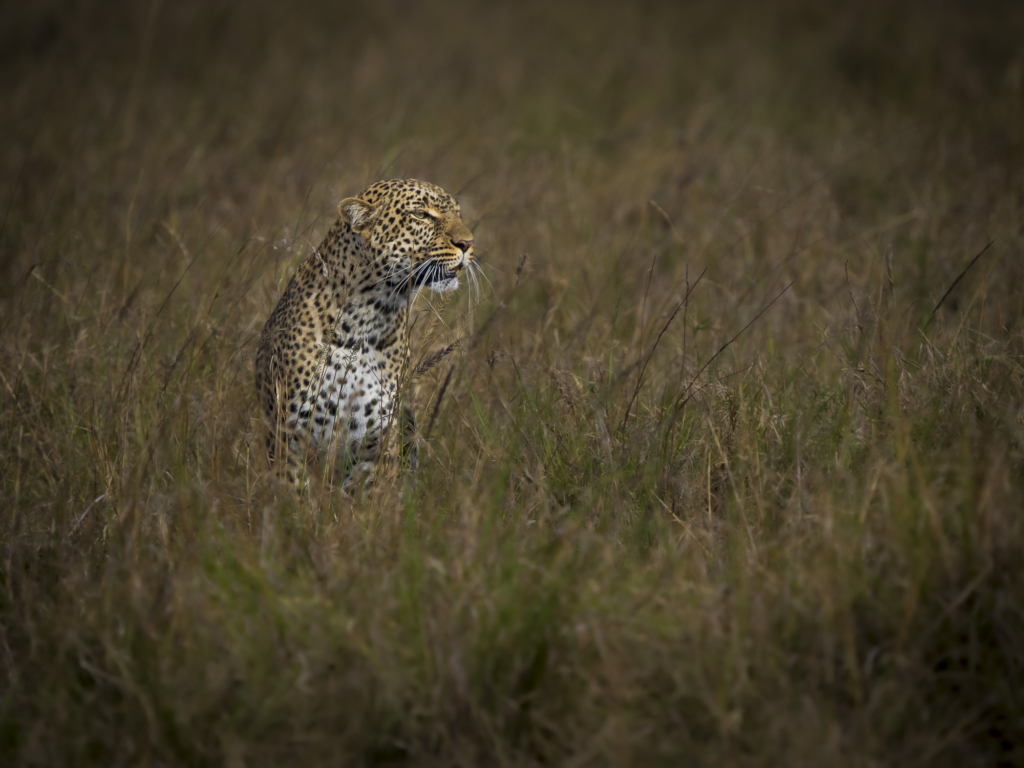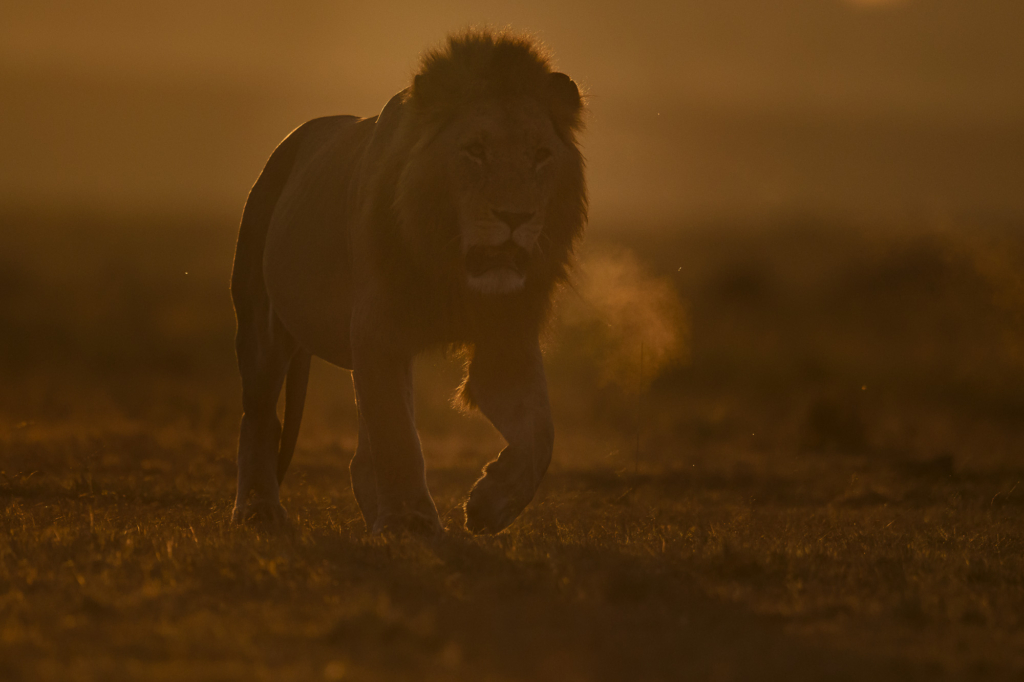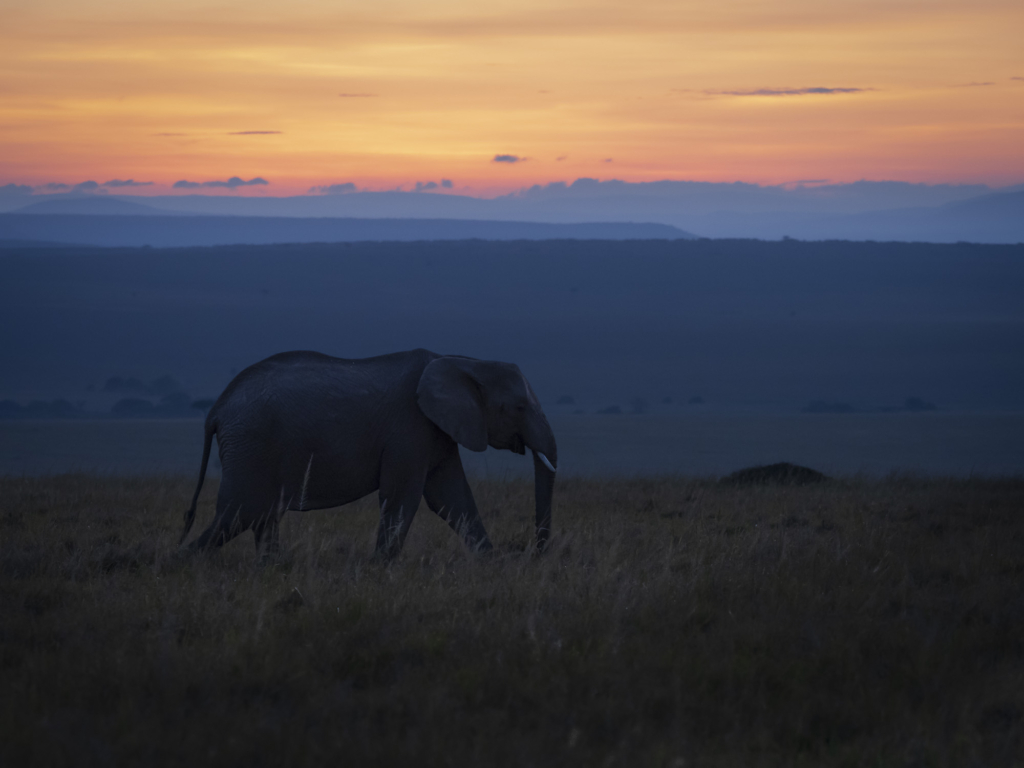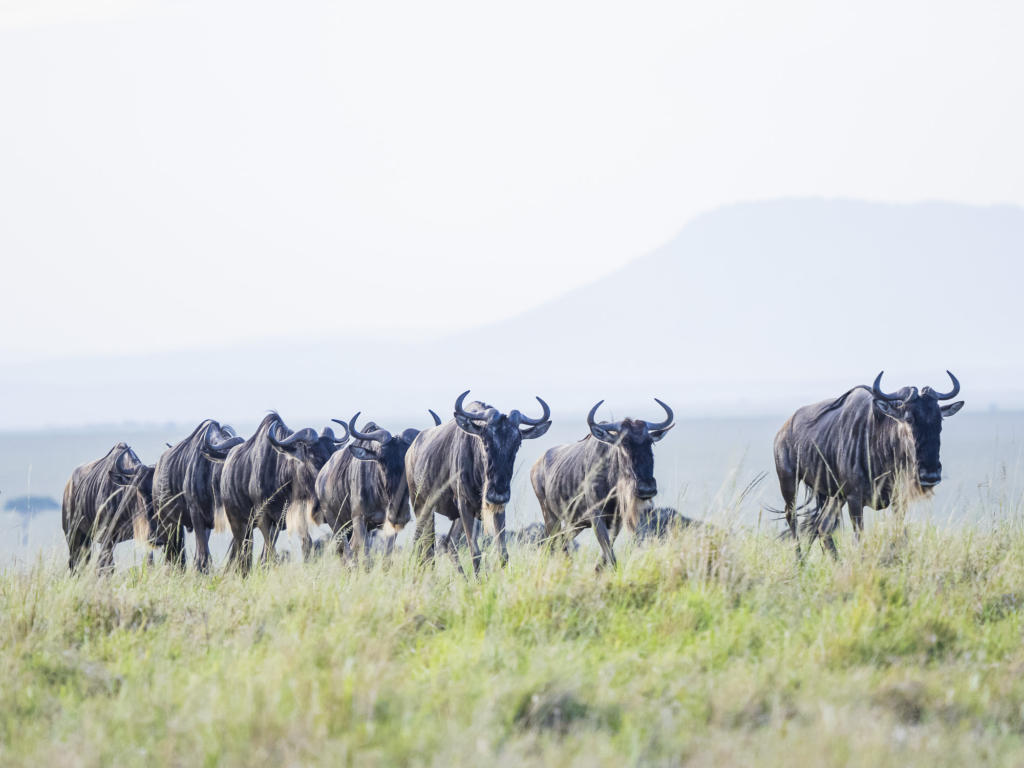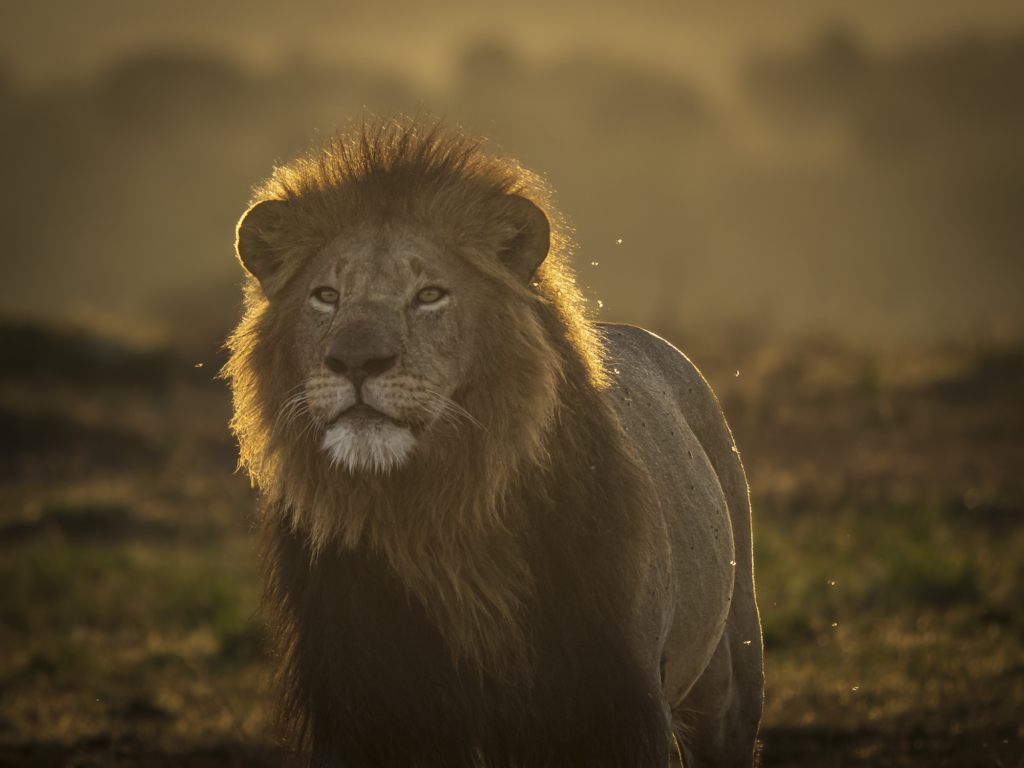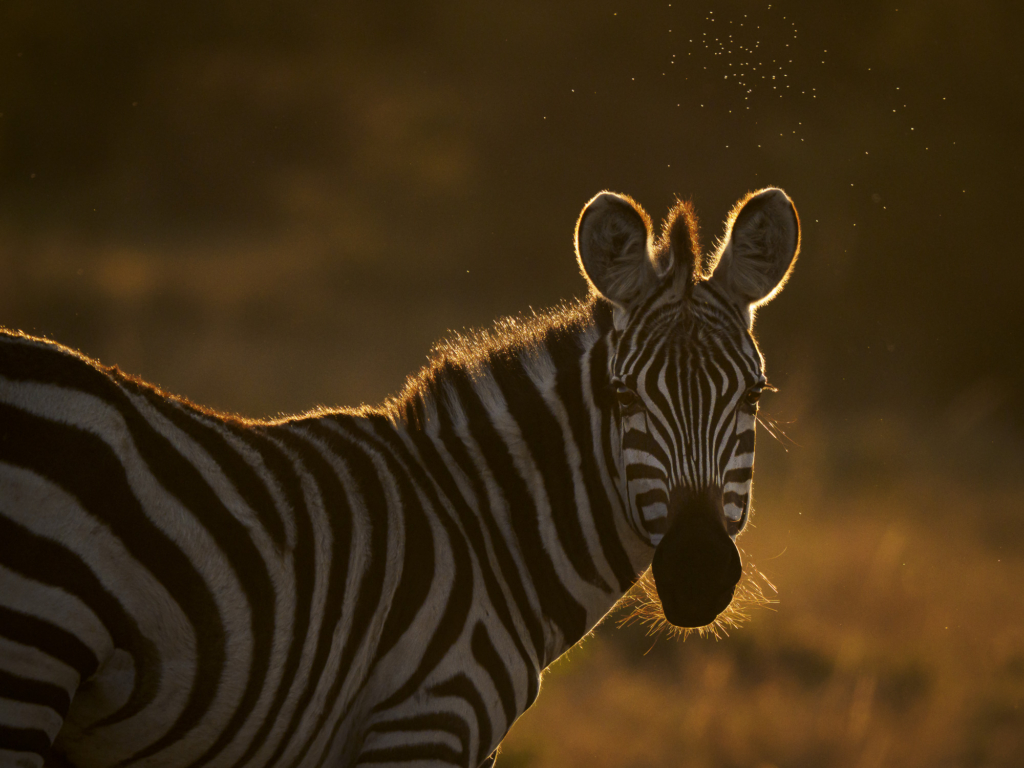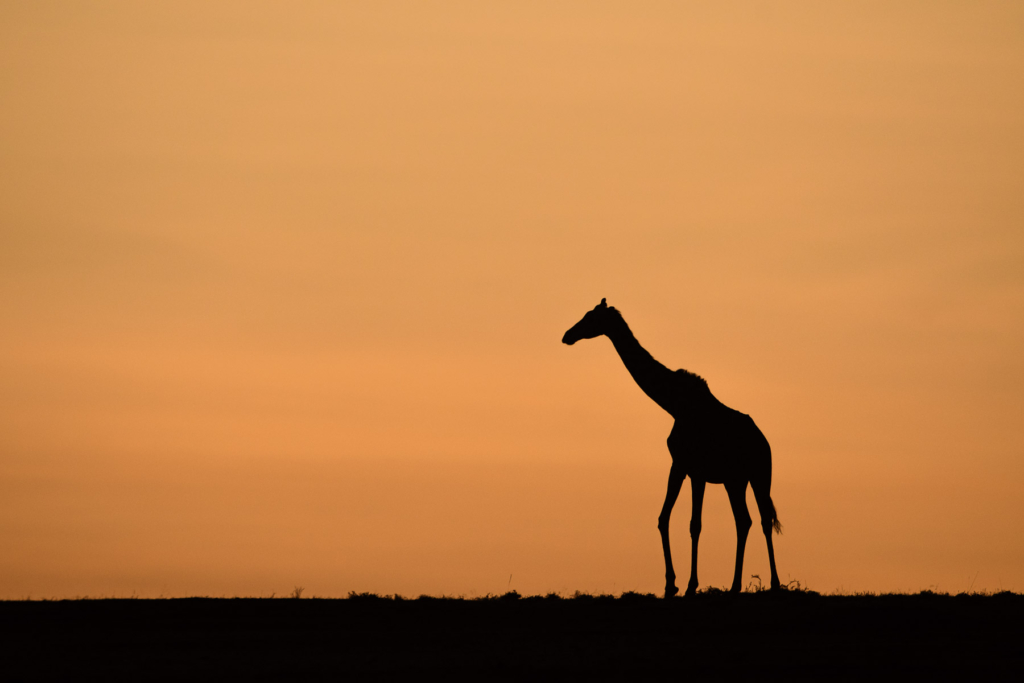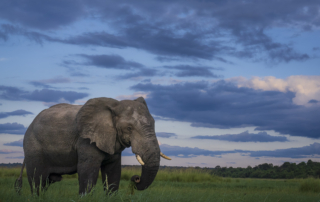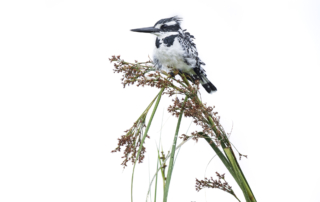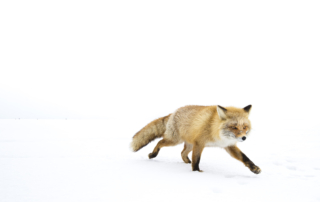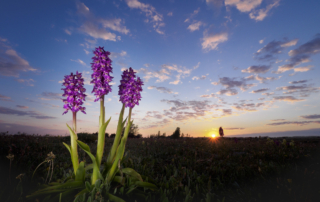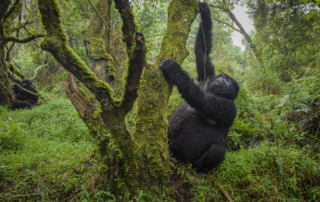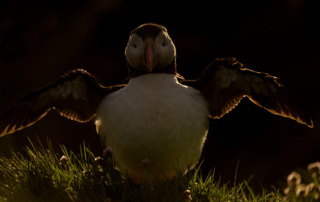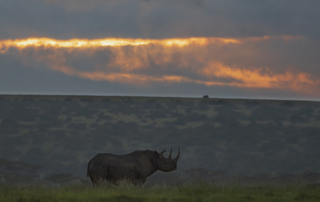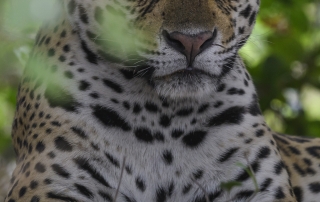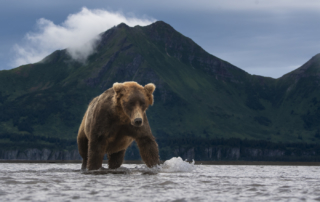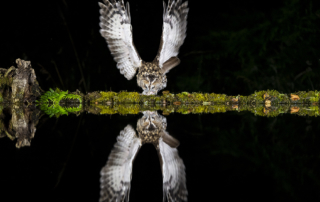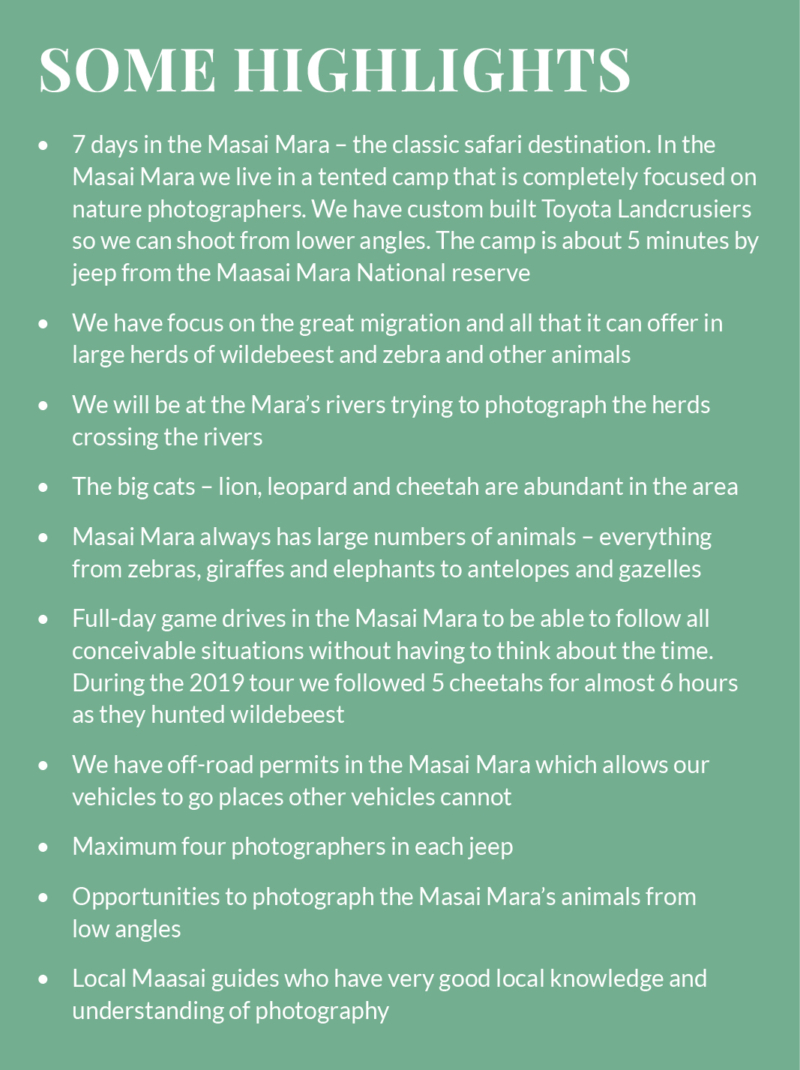
The sun sets on the horizon and the sky turns orange. A group of antelopes and zebras wanders across the large wide grass savannah, we have positioned ourselves so that we can photograph the migrating animals in silhouette against the glowing African evening sky. Slowly a giraffe moves towards an acacia tree and when it stops to graze we have the picture ready and in unison we let our cameras immortalize this classic African motif.
Later at dinner in our tent camp, we can hear Masai Mara lions roaring in the dark night in the distance. Expectations for the morning’s game drive are rising, what will we experience and photograph. If we perhaps find the lion or the more shy leopard lying in a tree, regardless of this, we know that the Masai Mara will also offer us unforgettable photo opportunities of both animals, birds and landscapes tomorrow.
MASAI MARA
The Masai Mara is located in southwestern Kenya and is one of the best areas in all of Africa for viewing and photographing African wildlife. Together with the Serengeti National Park in Tanzania, the Masai Mara forms one of the world’s most spectacular ecosystems with perhaps the largest concentration of animals in the entire world. The ongoing migration of wildebeest and other grazing animals such as zebras and antelopes usually comes to the Masai Mara during the month of July and then the savanna is filled with millions of animals. To get to the grasslands of the Masai Mara, the animals have to cross the Mara River and this phenomenon has become one of the truly great nature experiences in the world and something that as a nature photographer and nature enthusiast you just have to experience at some point in your life. When the animals cross the river to get to new pastures, they expose themselves to great danger as the river is “full” of crocodiles who are happy to take advantage of this opportunity. To reduce the risk of becoming a crocodile’s prey, the animals gather in large herds and the hesitation can be long before venturing into the river. Finally, someone ventures out and is immediately followed by the herd. In order to get across the river as quickly as possible, the animals sometimes throw themselves out of the bank and land on their relatives.
On the tour will we of course try to get good pictures when the wildebeest and the other grazers cross the river but we will not forget everything else that is around. The animals are literally everywhere and of course the large amounts of grazing animals attract many predators, so we have very good chances of experiencing unique encounters with the big cats.
Dagsprogram
Day 1 20/7 (Lunch – Dinner)
Transport by bus from Nairobi to Aitong in the morning where we are met by our Masai guides for further transport to our tent camp. After arriving at our tent camp, will we get lunch and then get ready for our first game drive. Back in the tent camp after dark.
Day 2–6 21/7 – 25/7 (Breakfast – Lunch – Dinner)
During the days in Masai Mara will we do a full-day game drives (breakfast and lunch are eaten outside in the park). We travel by jeep in the Masai Mara and are constantly looking for motifs. We have permits to drive off-road to increase our photo opportunities.
Day 7 26/7 (Breakfast – Lunch)
Morning game drive in the same way as before. After lunch will we drive to Aitong for further transport by bus Nairobi. The tour ends at Jomo Kenyatta Airport.
More information
Photographic leader
Henrik Karlsson, born in 1968, is a photographer, writer and conservation biologist.
He is ambassador for OM SYSTEM and has been appointed as a National Geographic Explorer. He is also a member of the Swedish Nature Photographers Association (Naturfotograferna/N) as well as PhotoNatura. In 2003 he was awarded Naturfotografernas/N and Kodak’s scholarship. Henrik has also won awards in several European photo competitions.
Henrik has a wide selection when it comes to subjects to take images of and tell stories about. He will be more than happy to photograph everything from insects to the orchids in the forest or the great wild animals around the world. He has the whole world as his photographic field but is more and more drawn to Africas beauty and wildness.
Previously, Henrik worked as a guide in several Swedish Nature Reserves and National Parks. He is a frequent lecturer and an appreciated guide on photo courses and workshops. He also leads photo tours all over the world.
In 2011 Henrik self-published the book ”Mångfaldens ö – bilder och tankar från Ölands natur”, and the book ”Vilda Norden” was published in 2017. 2020 he published the book Ölands orkidéer and in 2021 Orkidéer på Gotland.



